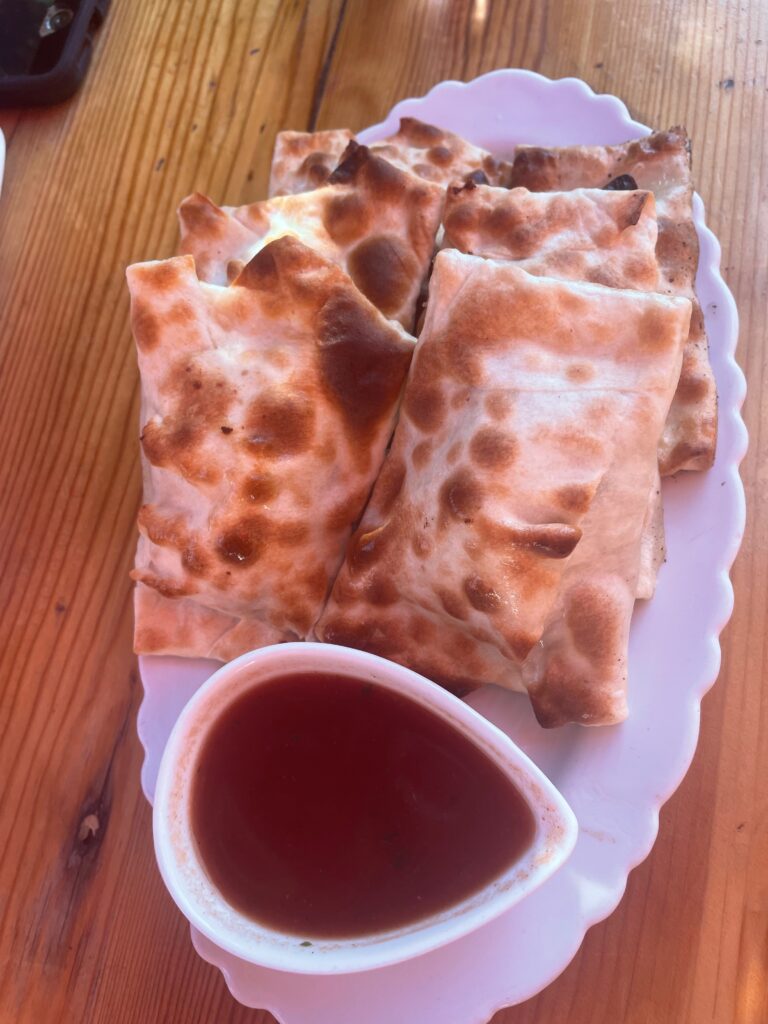The ancient city lined with sandy limestone domes, infamous Madrassas, and legendary textiles. Buhkara is located in a desert, withstanding increasingly high temperatures.
An Islamic cultural center, and prominent contributor to the Silk Road, Bukhara conserves it’s ancient architecture.
At its peak, craftsmen and artisans were the most prestigious title to have. Generation after generation perfects ceramics, jewelry, and all forms of art. Bukhara is overflowing with artists, inspired by merchants, prophets, intellects, and businessmen alike. This is a magical city to be in.
Within the city, you will find many caravanserai which are somewhat like a modern day motel. These were large buildings made for housing merchants as they make their journey along the Silk Road. The land of the Tajiks, and the Turks, which comprises the current country of Uzbekistan, have been practicing hospitality since birth. Till this day, you will encounter the kindest people here and around the country.
The main language of Bukhara is a dialect of Farsi followed by Russian and the national language, Uzbek. The people of Bukhara and the people of the capital city Tashkent are quite different and have passed down different languages. The local Farsi is verbally inherited from previous generations. There is no written version.
The region has been passed through quite a number of hands. In 1220, Genghis Khan and the Mongol army, slaughtered and seized Bukhara enslaving and killing the local community. During the rule of the great Amir Timur, Bukhara was at it most thriving time. Like much of Central Asia, Amir Timur’s rule was incredibly prosperous. Finally, the Emirate of Bukhara (or the territory ruled by an Emir in the Muslim culture) spanned the late 1700’s up until the Russian’s begin to take over Central Asia. The Emirate of Bukhara spanned the original Turkistan land, making it’s capital Bukhara.

WHAT TO DO:
- SHOP. Be prepared to spend all your money and buy a large luggage to take home with you
- Each ceramic expert/school has their own signature style. Browse the traditional Bukharian handmade traditions and take a few home.
- Must visit a real blacksmith
- Historically known for textiles, there is also a ton of handmade clothing
- After traveling to Turkey, you can find cheaper rugs than the ones I found in Bukhara but maybe they are just different!
- Visit the Madrassas and look inside where students once studied. This was a center of Islamic education until the 16th century. You can walk inside most of the Madrassas. Local’s have set up their craft stores inside. Explore the once occupied dormitories and classrooms while you walk through. Here are some Madrassas to check out:
- Poi Kalan
- The infamous Ulugbek Madrassa
- Abdulaziz
- Try olot samsa. Different than the traditional tandir samsa, this dough is thin, crispy and extremely tasty. The place at the pond in the center of the city sells them.

- Visit the Summer palace of the Emir. Take a taxi or get a guided tour. Though the building stays true to its Asian roots, it is a blend of the East and West. Heavily inspired by a palace in St. Petersburg, the craftsmen were trained in Russia. You will also find too many Chinese and Japanese vases to count.

- Skip the winter palace, the US embassy and other investments have remodeled it, making it a little less authentic. Though if you have time to kill, this might be a good place to stop by!
- Visit the synagogue in Old Town. There is a 500 year old Torah on display.
- Actually, Jews in Bukhara used to pray alongside Muslims in Mosques. This Synagogue was somewhat created by accident.
- Jews started settling across Central Asia in the 6th century AC. Bukhara is home to one of the largest ancient Jewish communities in Central Asia. In the 1970’s, after much Jewish discrimination 🙁 most of the population moved to the US or Israel. Still you can walk around the Jewish quarters in the Old Town. Today in Israel there is a Bukharan Jew quarter shared with Afghan and Iranian Jews.
- A traditional dance at the Nadir Divan Madrassa in the center of the Old Town. This is a touristy event, and the food is not good but it is a nice event to attend for some tea and listening to traditional Uzbek instruments with a twist on traditional and modern fashion of the area.
- If you’d like to try Bukharian Plov, try Центр Плова. My personal Plov favorite was in Samarkand but each region has their own version, so it’s best to get your own opinion 🙂
WHERE TO STAY
You can’t go wrong if you stay in the Old City. Anywhere else, and you will not experience Bukhara correctly. I stayed at the Minzifa Hotel and really enjoyed it. They also have breakfast included.
WHEN TO VISIT
Anytime BUT Summer. This is a desert so temperatures can go up to 140 degrees fahrenheit. And if you have experienced desert climates, you also know that winters are just as brutal. Spring and Fall are your best bet!
HOW LONG TO STAY
Realistically, you can spend 2-3 days max in Bukhara. The Old Town is small and easily walkable in a day. Leave another day for exploring the palaces and synagogues, and you are all set.
TRANSPORTATION
The easiest and best way to get to Bukhara is the fast train! From Tashkent, this train takes about 4 hours. Much longer if you take the regular train. Online it may say the tickets are sold out (they do get sold out in advance). Be sure to physically show up at the train station in Tashkent to see if they are actually sold out. Odds are you can still find tickets.
While in Bukhara, you can arrange for Taxi’s to take you anywhere you can’t walk to.
